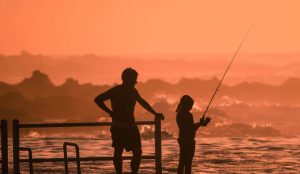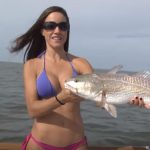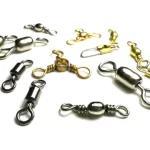Shore fishing, a classic introduction to angling, offers unique opportunities for both novice and experienced fishers. While often perceived as less effective than boat fishing, strategic bank fishing can yield impressive results, fostering patience and discipline.
1. Distance and Stealth:
Fish are perceptive; they detect movement and unnatural disturbances. Maintain a distance of at least five feet from the water’s edge to minimize shadows and avoid spooking fish. Select clear casting areas, free from excessive vegetation.

2. Parallel Casting:
Focus on casting parallel to the shoreline. Shallow, muddy areas, rich in natural food sources, attract fish. This technique mirrors successful boat fishing practices.
3. Lure Selection:
Match lures to the natural prey. Observe the surrounding environment, including colors and surface activity, to guide lure choices. Seasonal variations influence lure effectiveness; brighter colors work well in warm, active seasons, while neutral tones are preferable in colder conditions. Size also matters; larger lures suit active fish in warmer months, while smaller lures are better for slower metabolisms in colder periods.
4. Wind and Shade Utilization:
Wind concentrates food sources, creating predictable fishing zones. Observe wind patterns to identify these areas. Shade provides shelter and cooler waters, attracting fish during hot days. Dawn and dusk are prime times for fishing shaded areas.
5. Vegetation Focus:
Fish congregate around vegetation, stumps, logs, and other cover. Cast close to these areas, being mindful of potential snags. Waders can extend casting range, but consider the impact on stealth.
6. Minimal Gear:
Shore fishing often involves frequent location changes. Carry only essential gear to avoid fatigue. A small tackle box with a few versatile lures and optional live bait suffices.
7. Patience and Observation:
Resist the urge to constantly relocate. Assess each spot thoroughly, considering factors like fish activity and local angler reports. Patience is key to identifying productive areas.
8. Test Casting:
When lacking sonar, use a weighted line to explore underwater terrain. Rocky areas are often productive for certain species. Note promising locations for future attempts.
9. Persistence and Exploration:
Avoid dismissing a location after a single unproductive trip. Return to explore different conditions and times. Research local shore fishing opportunities and experiment to discover optimal fishing spots.
Ready to put these shoreline strategies into action? Grab your gear, head to your local waterway, and experience the thrill of bank fishing success! Share your catches and tips with fellow anglers, and let’s make every shore fishing trip a memorable adventure.
Image/Source: Overton’s





